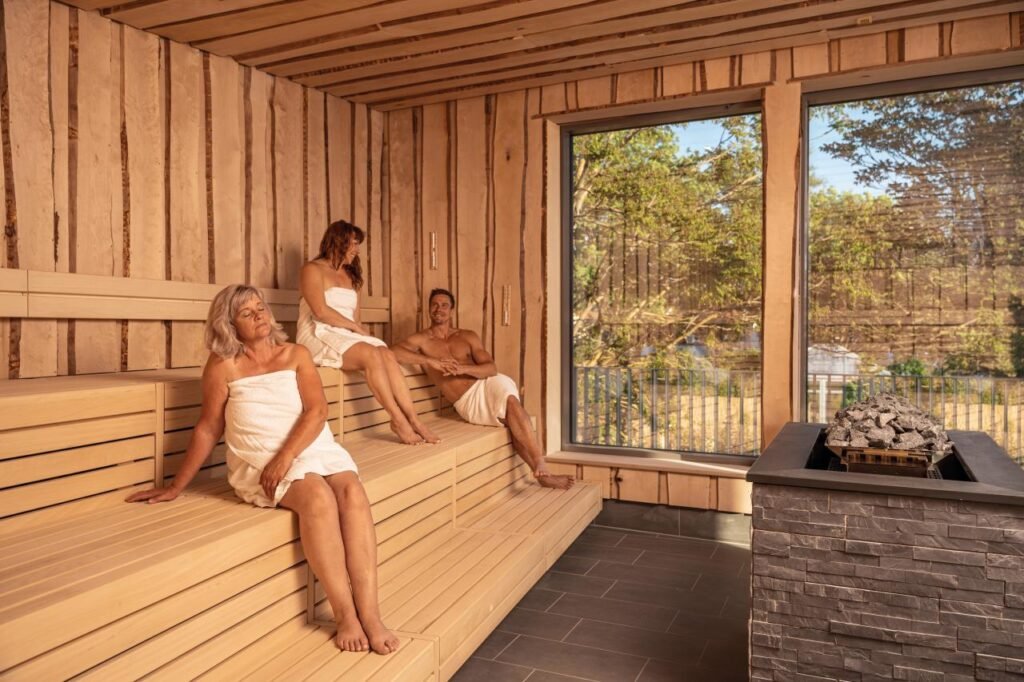A sauna cabin, often referred to simply as a sauna, is a small room or building designed for individuals to experience dry heat therapy. These cabins have been used for centuries in various cultures, notably in Finland, where they hold a significant cultural and historical role. Modern sauna cabins come in various designs, from traditional wood-paneled versions to sleek, contemporary models with advanced features. Their primary purpose is to provide a space where individuals can relax and sweat, promoting overall health and well-being.
Historical Background and Evolution
The concept of saunas dates back to ancient times. Over time, the design evolved to include stone stoves heated by burning wood, which created a more controlled environment for heat therapy. Today’s sauna cabins have advanced considerably from these early models, incorporating modern materials and technologies to enhance the user experience.
How a Sauna Cabin Works

At its core, a sauna cabin operates on a straightforward principle: heating the air to induce sweating. The interior of a sauna cabin is typically lined with wood, such as cedar or spruce, which helps to maintain a consistent temperature and create a soothing environment. The heating element, usually a stove or heater, warms the air to a temperature ranging from 150°F to 195°F (65°C to 90°C). This dry heat encourages the body to sweat, which can have various health benefits, including improved circulation and detoxification.
Types of Sauna Cabins
There are several types of sauna cabins, each with its own unique characteristics and benefits:
- Traditional Finnish Saunas: These are the most common type and use a wood-burning stove or electric heater to heat the air. Users can also pour water over hot stones to create steam, which can increase humidity and enhance the sauna experience.
- Infrared Saunas: Infrared saunas use infrared lamps to directly heat the body rather than the air. This allows for a lower ambient temperature, making the experience more comfortable for some users. Infrared saunas are often touted for their ability to penetrate deeper into the skin, potentially offering more intense therapeutic effects.
- Steam Rooms: Though not technically saunas, steam rooms are similar in that they use heat for therapeutic purposes. They operate at lower temperatures but higher humidity levels, creating a different environment compared to traditional dry saunas.
Benefits of Using a Sauna Cabin
Regular use of a sauna cabin can offer numerous benefits for both physical and mental health:
- Detoxification: Sweating helps to flush out toxins from the body, which can promote overall health and wellness.
- Improved Circulation: The heat from the sauna causes blood vessels to dilate, improving circulation and helping to deliver more oxygen and nutrients to muscles and tissues.
- Muscle Relaxation: The warmth of the sauna can help to relax muscles, reduce soreness, and alleviate tension, making it a popular choice for post-exercise recovery.
- Stress Relief: The calming environment of a sauna can help to reduce stress and promote relaxation, offering a break from the demands of daily life.
- Skin Health: The sweating induced by a sauna can help to cleanse the skin by removing impurities and dead skin cells, potentially leading to a healthier complexion.
Safety Considerations
While saunas offer many benefits, it is important to use them safely to avoid potential health risks. Here are some key considerations:
- Hydration: It’s crucial to stay well-hydrated before and after using a sauna to replace fluids lost through sweating. Drinking water can help prevent dehydration and maintain overall health.
- Duration: Limiting the time spent in the sauna is important to prevent overheating. Most experts recommend sessions of 15-20 minutes, followed by a cool-down period.
- Health Conditions: Individuals with certain health conditions, such as cardiovascular issues or respiratory problems, should consult a healthcare provider before using a sauna. It’s important to ensure that sauna use is appropriate for their specific health needs.
- Temperature: Ensuring that the sauna temperature is not excessively high can help to prevent overheating and associated risks.
Choosing the Right Sauna Cabin
When selecting a sauna cabin, consider factors such as size, type, and features. Traditional Finnish saunas are ideal for those who enjoy the classic sauna experience, while infrared saunas might be preferable for individuals seeking a lower temperature. environment with potential deep-tissue benefits. Additionally, some saunas come equipped with modern amenities like built-in sound systems or lighting options, allowing for a more customized experience.
In conclusion, a sauna cabin is more than just a luxury; it’s a tool for relaxation and health. Whether you opt for a traditional sauna or an infrared model, understanding how it works and how to use it safely will help you maximize the benefits of this time-honored practice.




